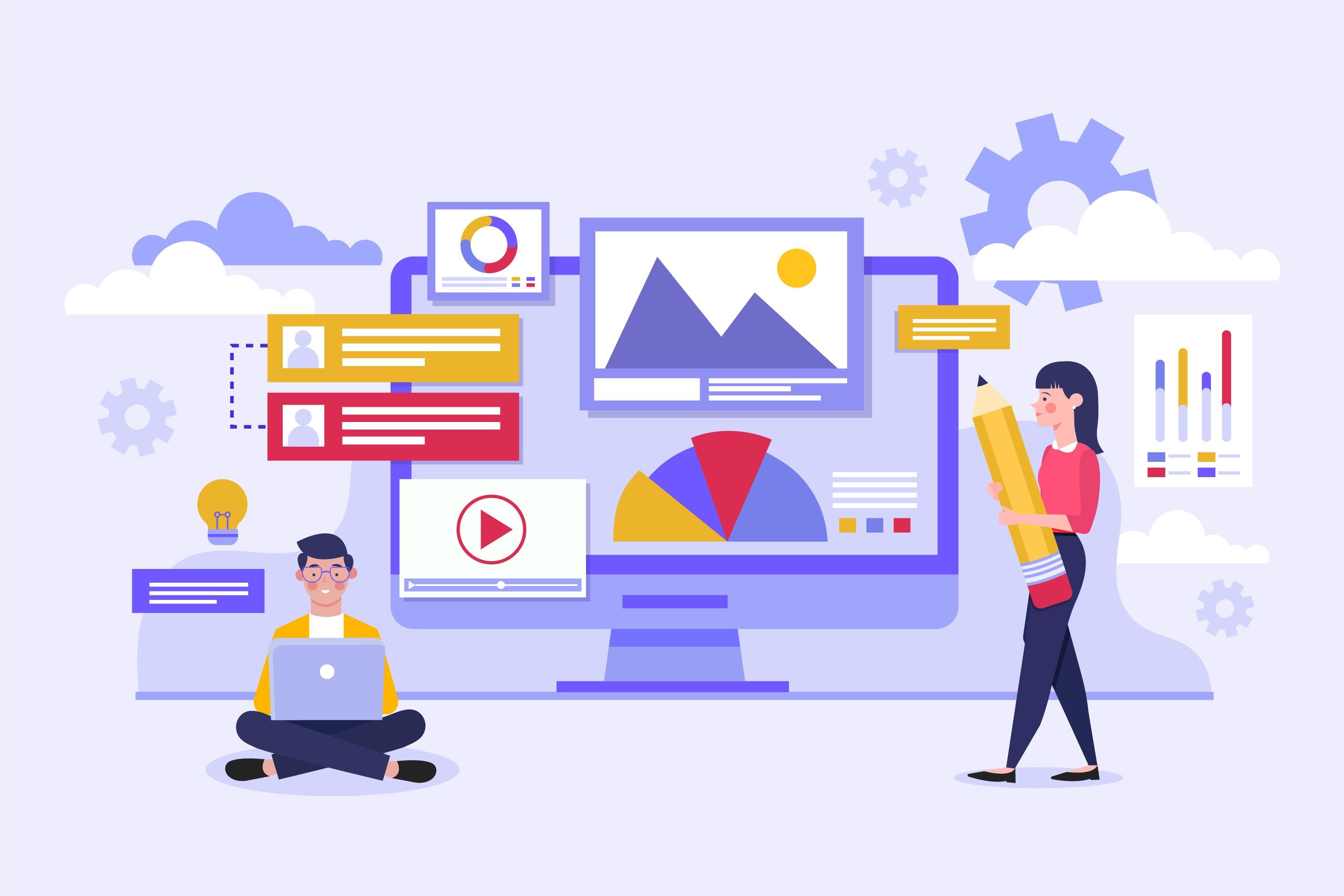Artificial Intelligence is prevalent wherever you go. Be it business, health, entertainment, navigation, manufacturing, or logistics; AI has made an impact in some way or another.
When the world was suffering at the hands of the pandemic, Artificial Intelligence played an essential role in speeding up the work processes in the healthcare industry.
In the past, too, AI and machine learning have been instrumental in creating technologies, devices, and mechanisms that helped us change the way we do our daily chores. Something as trivial as unfolding the curtains can now be done with the help of AI. Fascinating, isn’t it?
The global AI market value is speculated to cross $126 billion by 2025, and a Global New Wire report predicts an annual CAGR of 35.6% between 2021 and 2026.


Machine Learning is one of the main components of AI. It helps deliver high-impact services like understanding user behavior, providing recommendations, data on important analytics, and much more.
Companies are using AI and its associated technologies to generate higher revenues by implementing technologies like inventory optimization, pricing recommendation, customer-service analytics, sales & demand forecasting, thus providing a blanket cover of tech-enabled services.
Even though AI has operational capabilities in every industry, some areas have seen more AI-based innovation than others.
Here are five AI trends of 2021 you should be leveraging for your business.
AI Trends in 2021
Natural Language Processing
Natural Language Processing (NLP) is a technique that enables machines and systems to understand unstructured data. As a result, the machines can respond via text or speech, imitating a human’s way of communicating.
In other words, AI-powered NLP forwards the ability to understand a piece of text and spoken words to a computer, similar to how a human would. Just as we communicate with another person, NLP helps a machine possess the same quality.
It can help process and analyze large texts or any information present in articles, blogs, reports, or even an email.
What can NLP do?
- Speech Recognition: Providing Speech-to-Text services as it can be seen in Siri or Google Assistant.
- Part of Speech Tagging: Helps recognize some specific words/phrases in a sentence by understanding their part of speech. Speech tagging is also called Grammatical Tagging.
- Sentiment Analysis: With a practical understanding of language in the text, NLP can help identify emotion in the text. It can highlight subjective qualities like sarcasm, confusion, emotions, etc.
With these elements included in the everyday technical applications and systems, we can implement measures like spam detection, machine translation (Google Translate), chatbots, virtual agents, social media sentiment analysis, and text summarization.
Generative Pretrained Transformer (GPT)
The first version of GPT was released in 2018 with 117 million parameters. GPT-2 came out in 2019 with 1.5 billion parameters. GPT-3 has 175 billion parameters which makes it a better option.
The GPT technology is the brainchild of Elon Musk’s OpenAI, which is on a mission to “discover and enact the path to safe Artificial General Intelligence (AGI).”
GPT works on the lines of an autoregressive language model that leverages deep learning to curate human-like texts. Simply put, it’s an autocomplete program predicting “what will come next.”
One of the best examples of GPT-3 in action is this article published by the Guardian. GPT-3 is considered the most powerful language model ever as it understands how humans communicate and processes a vast reservoir of English sentences.

GPT-3 uses Neural Networks to create and discover new sentence patterns while understanding the rules of the language.
There are several AI-powered tools to write articles, blogs, social media posts, emails, and many other content formats. One of these tools, ‘SEO Assistant,’ is built and employed by Scalenut and presented as an AI Assistant for content creators and marketers to produce bespoke content and generate new content ideas.
AI in Healthcare
The COVID pandemic slowed down the rate of AI-led innovation in other areas and diverted it towards finding better healthcare solutions amidst a global crisis. From delivering better healthcare solutions, health monitoring, administration, and adherence, we can expect some incredible changes in the industry.

AI can help the healthcare and medical industry fast track its rate of disease discovery and innovation in increasing life expectancy, access to healthcare services, and improve the patient’s experience.
In addition to this, AI is used for non-medical and support systems. In the former, the hospital’s staff can use AI-powered systems to process and organize administrative data. It can help fast-track documents processing, record keeping, storage, and access to data.
As a support system, doctors and lab technicians can utilize AI’s abilities to analyze MRI scans, X-rays, and CT scans for faster results. Virtum is an example of how AI is used for image analysis and screening.
AI in Art

This might be one of the most unexpected and least known applications of Artificial Intelligence. While creating original content and discovering patterns has become a regular use case of AI, producing art replete with emotions and sentiment is something new and worth exploring.
Art made with the help of AI is called synthetic media. This is where artists use AI to automate the outcome or improve the existing media and artwork production systems.

This painting is created with an AI-powered tool called The Painting Fool.
Computational Creativity represents another subfield of AI in Art. In this, computer programs replicate the creative elements of artistic thinking and behavior.
Even though it’s a sinister version of AI, Deep Fake depicts the lengths of creativity and applicability of this technology in creating human-like emotions, voices, actions, and ways of saying or doing things. But we also have startups like Sensity using the same technology to reverse-engineer the deep fakes and identify the doctored images, news insights, and videos.
Besides visual arts, one can also do music composition with an AI-based system called probabilistic approaches. A few startups like Brain.fm have already taken this technology to the next level.
AI in Deep Analytics and Hyper Automation
Creating automated workflows is, by far, one of the most incredible use cases of AI. Here too, AI and NLP work together to build business processes that work effectively without human intervention.
Companies using AI within their operations and systems observe better business value provided they have a well-oiled plan to harness AI. In the image below, you will find the difference between businesses using AI and others who are not using AI.

A system that automates the day-to-day business processes and reduces human intervention will benefit from a reduced scope of errors. With continuous implementation, the margin of error will further reduce, leading to an improvement in the business outcome.
For instance, a simple process of product recommendations used by Amazon is driving 35% of its total sales.
Conclusion
These trends of AI are not just creating new ways of doing business and interacting with the world around us but also pushing the boundaries of the existing systems and operations.
Companies using AI set themselves apart from the herd. They experience better overall performance, more streamlined work processes, and are more resource optimized.
Besides improving the work processes, AI is also used to predict and mitigate risks, helping companies safeguard their interests, workflows, and operations from unwanted problems and contingencies.
The best part about AI is its flexibility. It can be molded according to the user’s requirements, provided one has the right resources to leverage AI for their work.
To sum it up, with the number of innovations we observe in the field, we can say that Artificial Intelligence is here to stay.








.webp)


